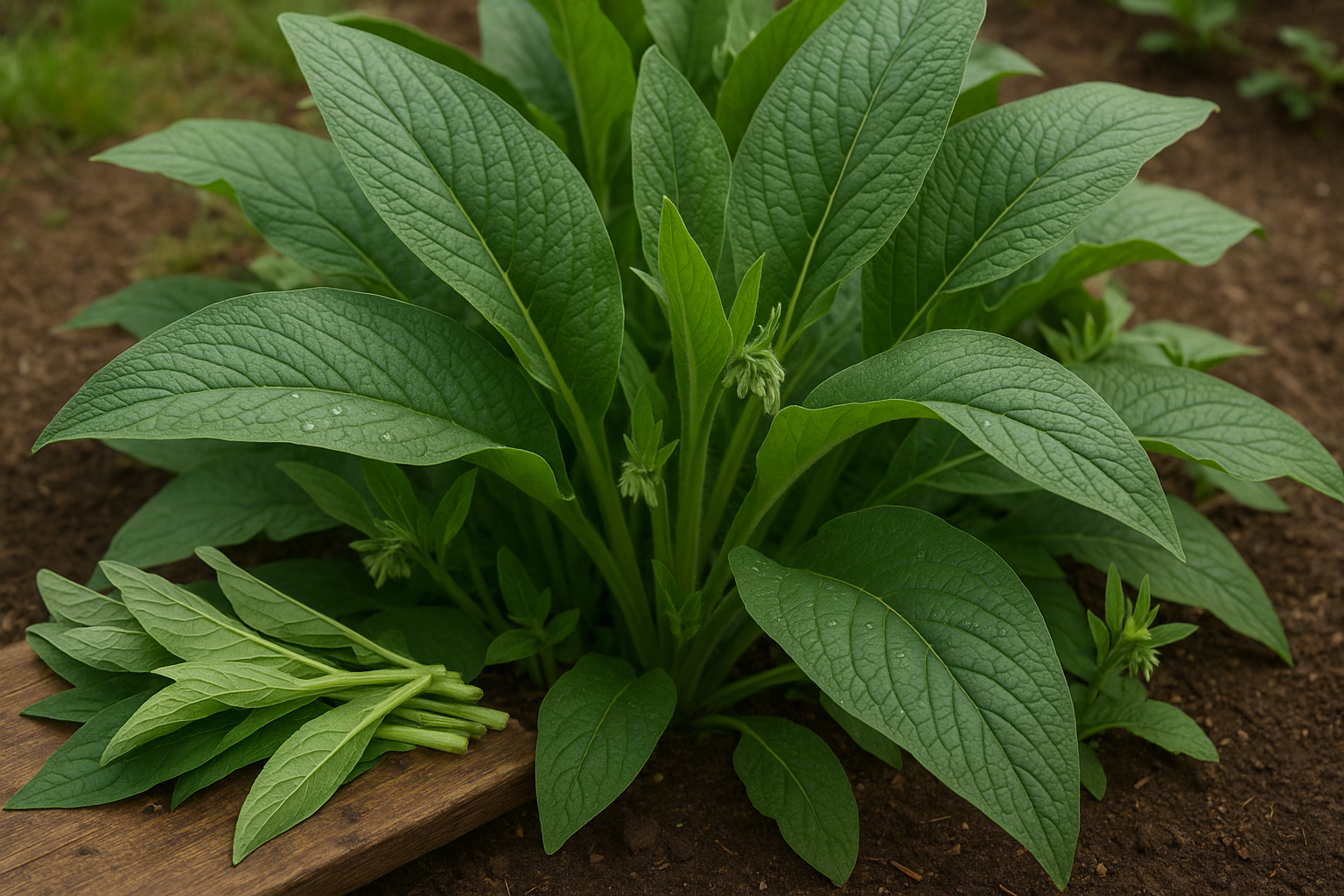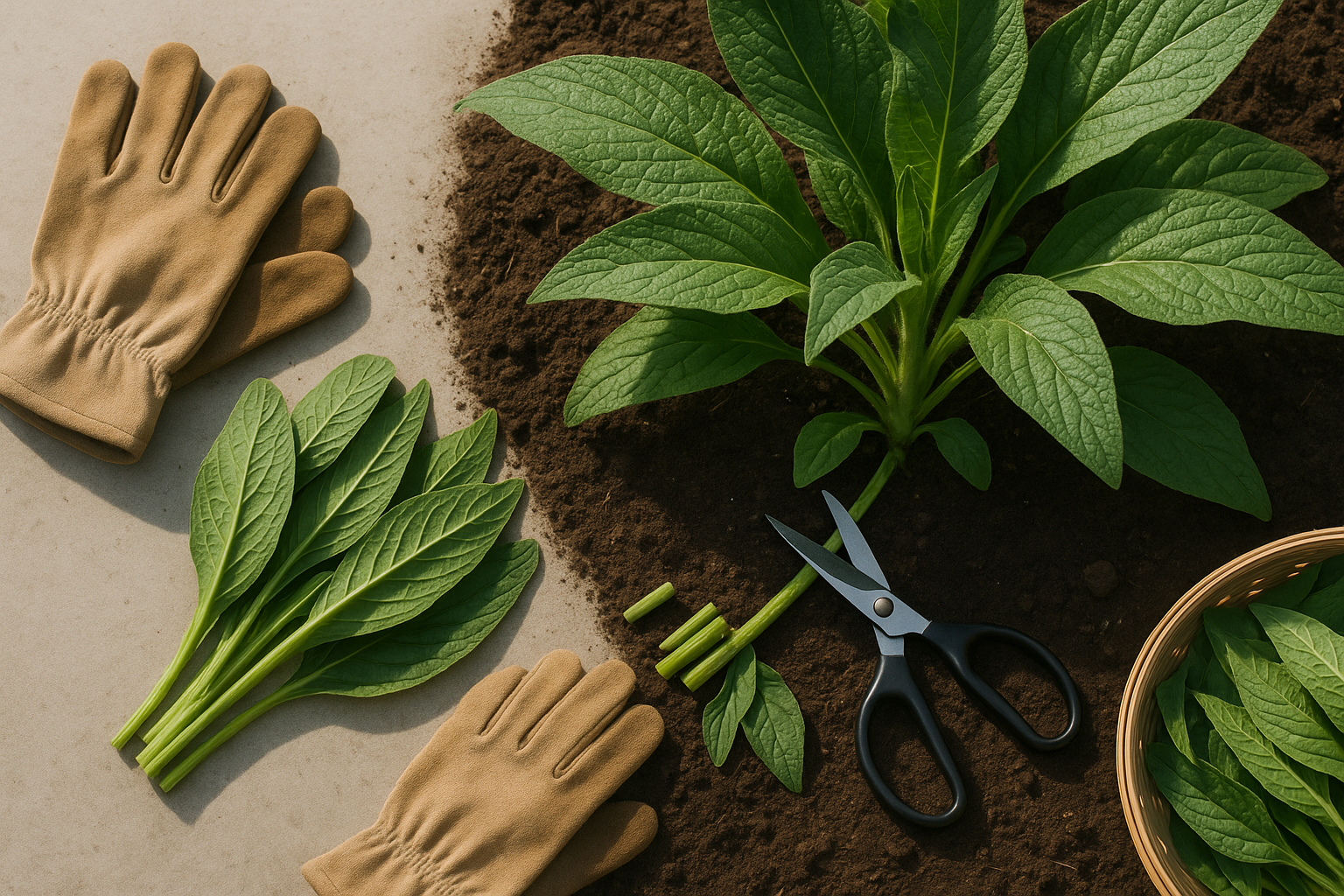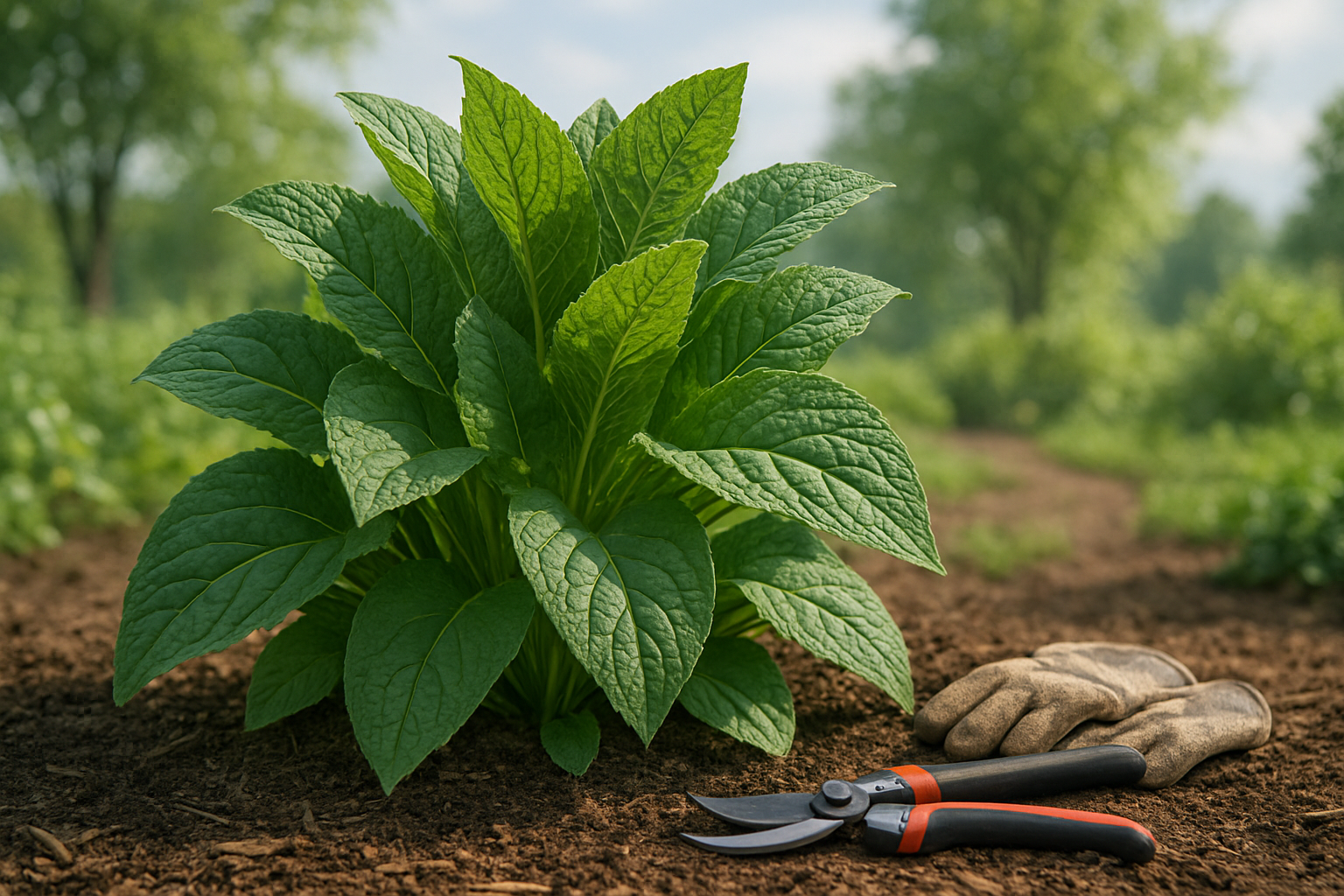Introduction to Comfrey and Its Uses
If you’ve ever wondered how to harvest comfrey, you’re not alone. This remarkable plant, known for its quick growth and lush, broad leaves, is a favorite among gardeners and herbalists alike. Comfrey’s roots run deep—both literally and figuratively—finding use everywhere from boosting compost piles to soothing skin in traditional natural remedies. Many also harvest it to feed livestock or enrich garden beds thanks to its rich nutrient profile.
However, like many powerful plants, comfrey has a dual reputation. Its benefits are well-known, but so are the concerns about potential risks—especially regarding safety for humans and animals. Certain compounds in comfrey can be harmful if ingested or improperly handled. That’s why learning how to harvest comfrey properly is so important: the right techniques protect your health, maximize your yield, and encourage the plant to thrive season after season.
In this guide, we’ll cover not only how to gather comfrey leaves safely but also why it matters, offering practical tips for home gardeners. Whether you use comfrey for herbal salves or as an organic fertilizer, understanding the safest, most effective harvesting methods can make all the difference.
When Is the Best Time to Harvest Comfrey Leaves?

The best time to harvest comfrey leaves is during late spring and early summer, just before the plant begins to flower. At this stage, the leaves are fully grown—large, deep green, and textured with a slightly hairy surface—while the young shoots remain smaller, more tender, and paler in color.
To get the most out of your comfrey patch, wait until each leaf reaches its mature size—usually about 12-18 inches long—rather than snipping the small emerging leaves. This ensures you’re collecting the most nutrient-rich material and allowing young growth to develop.
For ongoing harvests without stressing the plant, aim to cut back the leafy growth two to four times per growing season. Leave about 2 inches of leaf stem above the ground so the plant can recover quickly—comfrey is renowned for its rapid regrowth. Each time you cut, avoid stripping all the leaves from a single crown; instead, rotate your harvesting spots throughout your clump or row.
With this method, comfrey can bounce back vigorously, letting you enjoy multiple abundant harvests from late spring into early fall. Just remember, the more frequently you harvest, the more essential it is to water and, if possible, feed the plant between cuts so it can maintain its vitality. By timing your harvests carefully and giving your comfrey the care it needs, you’ll have a steady supply of fresh leaves all season long.
How to Harvest Comfrey Leaves Safely

Harvesting comfrey leaves is simple, but it’s important to do it safely to protect both yourself and the plant. Begin by gathering your supplies: a pair of sharp scissors or garden shears for clean cuts, and most importantly, sturdy gardening gloves.
Comfrey leaves are covered in tiny hairs that can cause skin irritation, so always wear gloves and long sleeves if possible. Select leaves that are large and healthy, avoiding any that are yellow, damaged, or wilted.
When you’re ready to cut, place your scissors about 2 inches above the base of the stem—just above the crown of the plant. Snip the stem cleanly without tugging or tearing, making sure not to cut into the crown or central growing point; this ensures the plant can regrow vigorously throughout the season.
Work your way around the plant, harvesting only about a third of the leaves at a time to avoid stressing the comfrey. Once collected, shake off loose dirt or debris, and rinse the leaves thoroughly under running water to remove any lingering soil or insects.
Lay the leaves out on a clean surface or paper towel to dry before use or storage. Always wash your hands well after handling comfrey, even if you’ve worn gloves.
By following these steps, you’ll keep your comfrey plant healthy and your harvest clean and irritation-free, making it ideal for composting, mulching, or herbal preparations.
Handling and Preparing Comfrey Leaves After Harvest
After harvesting comfrey leaves, it’s important to care for them immediately to maintain their quality and usefulness. Start by gently shaking off any loose dirt, then rinse the leaves with cool water to remove soil, insects, or debris. Carefully inspect each leaf for signs of pests, discoloration, or damage, discarding any that appear unhealthy.
If you plan to use the leaves fresh, such as for compost or mulch, pat them dry with a clean towel and use them promptly to avoid wilting. For long-term storage or uses like herbal salves or teas, drying is best. Lay the leaves in a single layer on a screen or drying rack in a warm, well-ventilated room away from direct sunlight. Turn them daily to ensure even drying. In about a week, the leaves should be crisp and ready for use.
Store dried comfrey leaves in an airtight container, such as a glass jar with a tight lid, and keep it in a cool, dark place to prevent moisture and light from breaking down their beneficial compounds. Always label your containers with the harvest date so you use the oldest stock first.
If storing fresh leaves briefly, wrap them in a slightly damp paper towel and place them in a perforated plastic bag in the fridge for up to a few days. Check regularly for any signs of mold.
This attention to post-harvest handling ensures you get the most value and potency from your comfrey harvest.
Health & Safety Precautions When Using Comfrey
Comfrey is a popular herb valued for soothing aches and minor injuries, but it comes with important safety concerns, mainly due to its content of pyrrolizidine alkaloids (PAs). These compounds are known to be toxic to the liver and have been linked to serious health risks, especially when comfrey is taken internally—such as in teas or capsules. Because of this, medical experts and health authorities strongly advise against ingesting comfrey in any form.
Even with topical use, caution is necessary. Never apply comfrey to open wounds, broken skin, or large surface areas, as PAs can still be absorbed and cause harm. Vulnerable groups—including children, pregnant or nursing women, and people with existing liver conditions—should avoid comfrey completely, even on unbroken skin.
If you choose to use comfrey cream or ointment, restrict it to small, intact patches of skin for short periods (usually just 5–7 days at a time), and always wash your hands after applying. Always buy products labeled “PA-free” to further reduce your risk, and talk with your healthcare provider before starting any new herbal regimen.
Being aware of these precautions helps you enjoy the soothing benefits of comfrey while keeping your health and safety front and center.
Conclusion
Using comfrey with confidence means pairing its powerful benefits with a responsible approach. Always harvest comfrey leaves and roots sustainably—never take more than one-third of a plant at a time, and let wild patches recover between harvests.
Safety comes first, so remember not to apply comfrey to open wounds or broken skin and avoid internal use unless a healthcare professional advises otherwise. Stick to using properly labeled comfrey products, and read all instructions carefully.
Be aware of potential risks for pregnant women, nursing mothers, and children, as discussed earlier. Keep an eye out for updated safety guidance, since research on comfrey is always evolving.
Before trying new topical recipes or store-bought creams, check with a qualified herbalist or your doctor to make sure comfrey fits your needs. With a mindful approach, you can enjoy comfrey’s unique properties while protecting your health and the environment for years to come.
